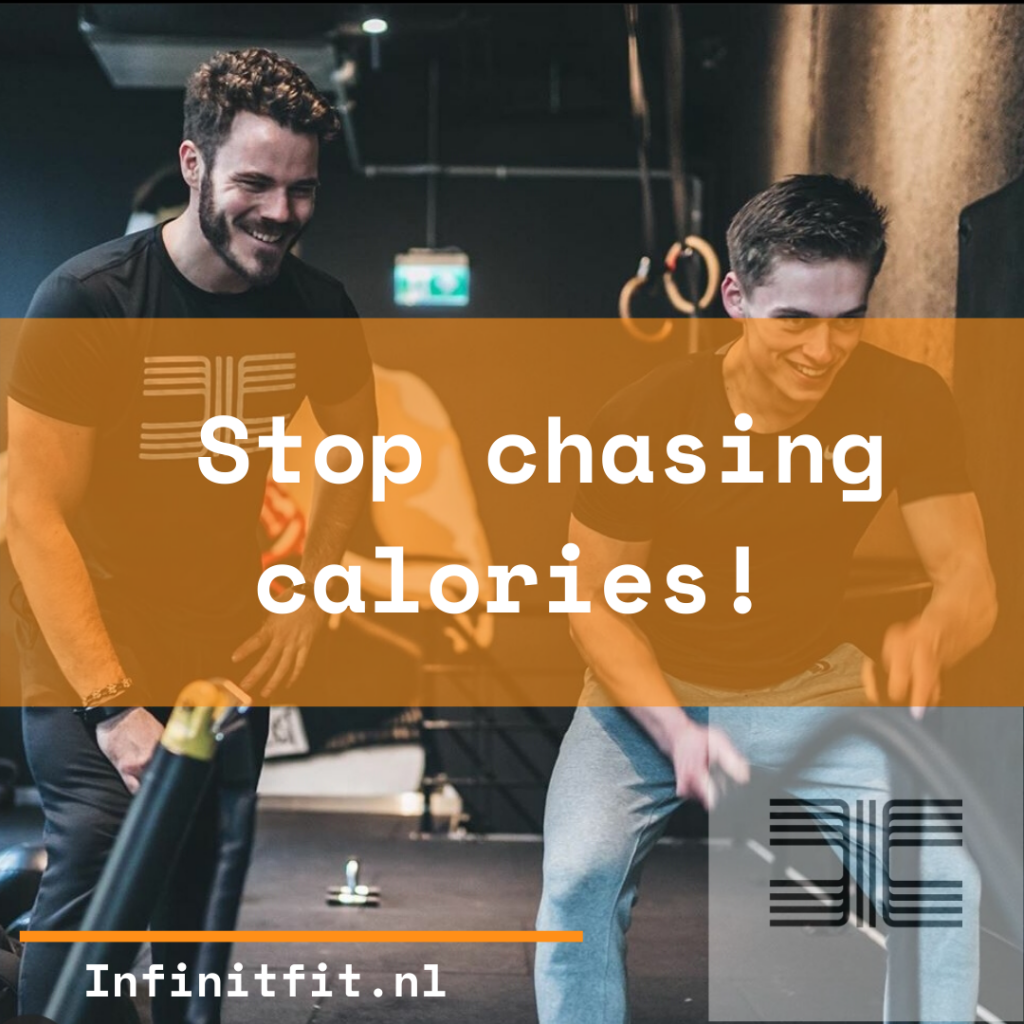Stop Chasing Calories
- By Maikel
- In Nutrition-en

HIIT, Spinning, workouts and fads of “1,000” calories are the trend of our time, but is this obsession with calories completely correct? Or is all that blood, sweat and tears wasted effort? Time to analyze these concepts with a scientific lense and see if these ways of training will really help you achieve your fitness goals. The answer will surprise you …
“Stop chasing calories, chase the adaptation instead” – Luke Leaman
Apples and pears
A calorie is simply a measure of how much energy a certain type of food contains. When you eat something, your body will store these calories in the form of protein, carbohydrates and fats as fat or glycogen or directly use it as energy for exercise and to maintain the normal functions of the body.
However, the energy used here is not the same as the energy you just put in your mouth. Your body uses adenosine triphosphate (ATP) as its energy currency. How well your body is able to process food and produce ATP depends on many factors, such as how fit you are, how much body fat you have and how much you train.
In other words, it is possible that you and your workout partner did the same workout and then eat an identical banana, but you immediately save that banana as fat. While your skinny girlfriend that you secretly envy does not gain a gram of fat. Your girlfriend also just consumed 600 kcal and you only consumed 400 kcal. Even if you both have an identical weight, the way in which you break down, store and consume energy will still differ per individual.
Chase the adaptation instead!
What if we can ensure that you can burn more calories in the same workout, including a large part of your body fat? What if we can use specific training to ensure that your body becomes more efficient in making energy and burning fat, whether you sleep, work or play with the children?
The first is very easy by making sure you have more muscles, more muscle mass will cause you to burn more calories with the same workout. Another positive adaptation of the body could be to build more mitochondria and improve oxygen supply through improved cardiovascular function. Your mitochondria are, as it were, are the steam ovens of your body, which ensure that all those calories that you eat are efficiently converted into ATP. The more heating furnaces you have and the better they function, the better your body will be able to burn fat.
The problem with calorie chasing
A HIIT, Spinning, F45, barry’s boot camp or whatever your latest fitness craze may be is that you burn calories because the intensity is constantly high and there are few breaks, you will gain little muscle mass, the chance is even greater that you break down more than you create. This alone will make the same workout less effective in the long run.
During high intensity training you mainly burn carbohydrates, which is good only if you do this for a longer period of time, your body will automatically produce fewer enzymes that are needed for burning body fat. The constant burning of carbohydrates is also physiologically very stressful on the body, not really useful when you are already trying to maintain a busy job and household.
Because you feel like you’ve worked hard, you think you’ve earned a drink or an ice cream. The only problem is that two glasses of wine, for example, will destroy the 3-400 kcal you just burned.
Not entirely bad
Don’t get me wrong, training should also have a fun factor and a sense of togetherness. Something this kind of concept does very well. One or two high intensity training with a friend can therefore not hurt at all. But if your goal is to be as toned in your bikini as much as possible, you’ll have to spend the majority of your workouts building a stronger, more efficient internal machine that burns more energy and more fat, any time, anywhere. You can read more about this here: How to turn your body into a fat burning machine.
You may also like
Carbohydrates
- 31 August 2020
- by Maikel
- in Nutrition-en

